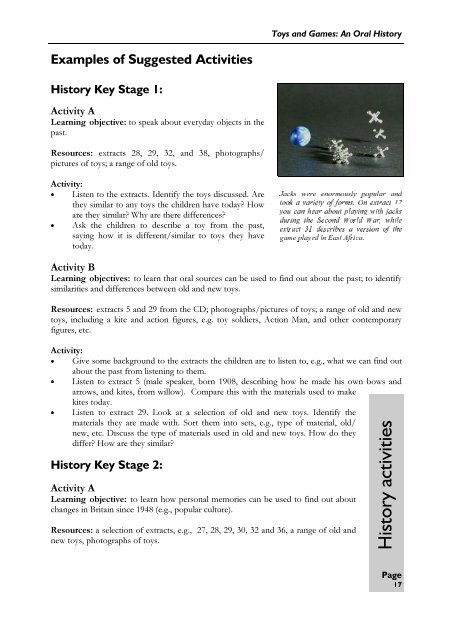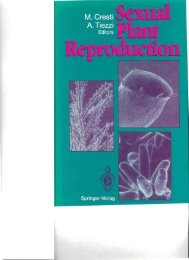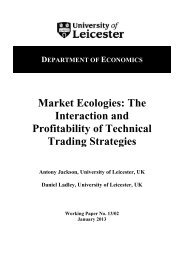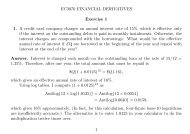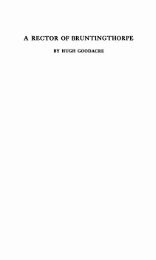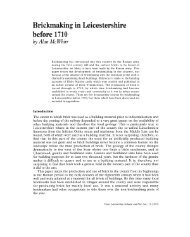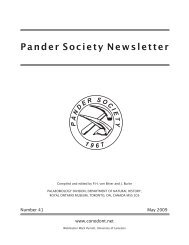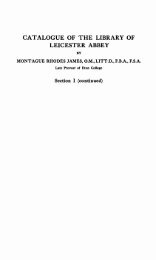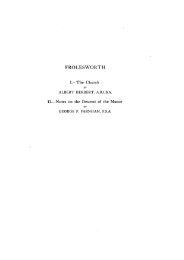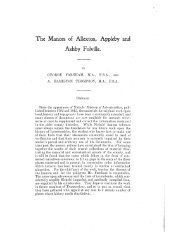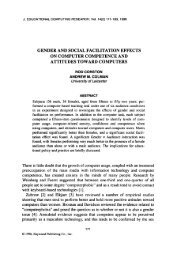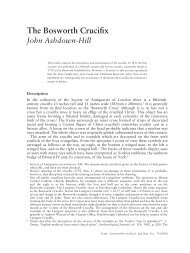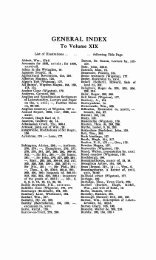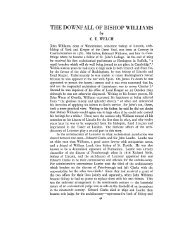Page Toys and Games: An Oral History - University of Leicester
Page Toys and Games: An Oral History - University of Leicester
Page Toys and Games: An Oral History - University of Leicester
Create successful ePaper yourself
Turn your PDF publications into a flip-book with our unique Google optimized e-Paper software.
Examples <strong>of</strong> Suggested Activities<br />
<strong>History</strong> Key Stage 1:<br />
Activity A<br />
Learning objective: to speak about everyday objects in the<br />
past.<br />
Resources: extracts 28, 29, 32, <strong>and</strong> 38, photographs/<br />
pictures <strong>of</strong> toys; a range <strong>of</strong> old toys.<br />
Activity:<br />
Listen to the extracts. Identify the toys discussed. Are<br />
•<br />
they similar to any toys the children have today? How<br />
are they similar? Why are there differences?<br />
Ask the children to describe a toy from the past,<br />
•<br />
saying how it is different/similar to toys they have<br />
today.<br />
<strong>Toys</strong> <strong>and</strong> <strong>Games</strong>: <strong>An</strong> <strong>Oral</strong> <strong>History</strong><br />
Activity B<br />
Learning objectives: to learn that oral sources can be used to find out about the past; to identify<br />
similarities <strong>and</strong> differences between old <strong>and</strong> new toys.<br />
Resources: extracts 5 <strong>and</strong> 29 from the CD; photographs/pictures <strong>of</strong> toys; a range <strong>of</strong> old <strong>and</strong> new<br />
toys, including a kite <strong>and</strong> action figures, e.g. toy soldiers, Action Man, <strong>and</strong> other contemporary<br />
figures, etc.<br />
Activity:<br />
Give some background to the extracts the children are to listen to, e.g., what we can find out<br />
•<br />
about the past from listening to them.<br />
Listen to extract 5 (male speaker, born 1908, describing how he made his own bows <strong>and</strong><br />
•<br />
arrows, <strong>and</strong> kites, from willow). Compare this with the materials used to make<br />
kites today.<br />
Listen to extract 29. Look at a selection <strong>of</strong> old <strong>and</strong> new toys. Identify the<br />
•<br />
materials they are made with. Sort them into sets, e.g., type <strong>of</strong> material, old/<br />
new, etc. Discuss the type <strong>of</strong> materials used in old <strong>and</strong> new toys. How do they<br />
differ? How are they similar?<br />
<strong>History</strong> Key Stage 2:<br />
were enormously popular <strong>and</strong><br />
Jacks<br />
a variety <strong>of</strong> forms. On extract 12<br />
took<br />
can hear about playing with jacks<br />
you<br />
the Second World War, while<br />
during<br />
31 describes a version <strong>of</strong> the<br />
extract<br />
played in East Africa.<br />
game<br />
Activity A<br />
Learning objective: to learn how personal memories can be used to find out about<br />
changes in Britain since 1948 (e.g., popular culture).<br />
Resources: a selection <strong>of</strong> extracts, e.g., 27, 28, 29, 30, 32 <strong>and</strong> 36, a range <strong>of</strong> old <strong>and</strong><br />
new toys, photographs <strong>of</strong> toys.<br />
<strong>Page</strong><br />
17


